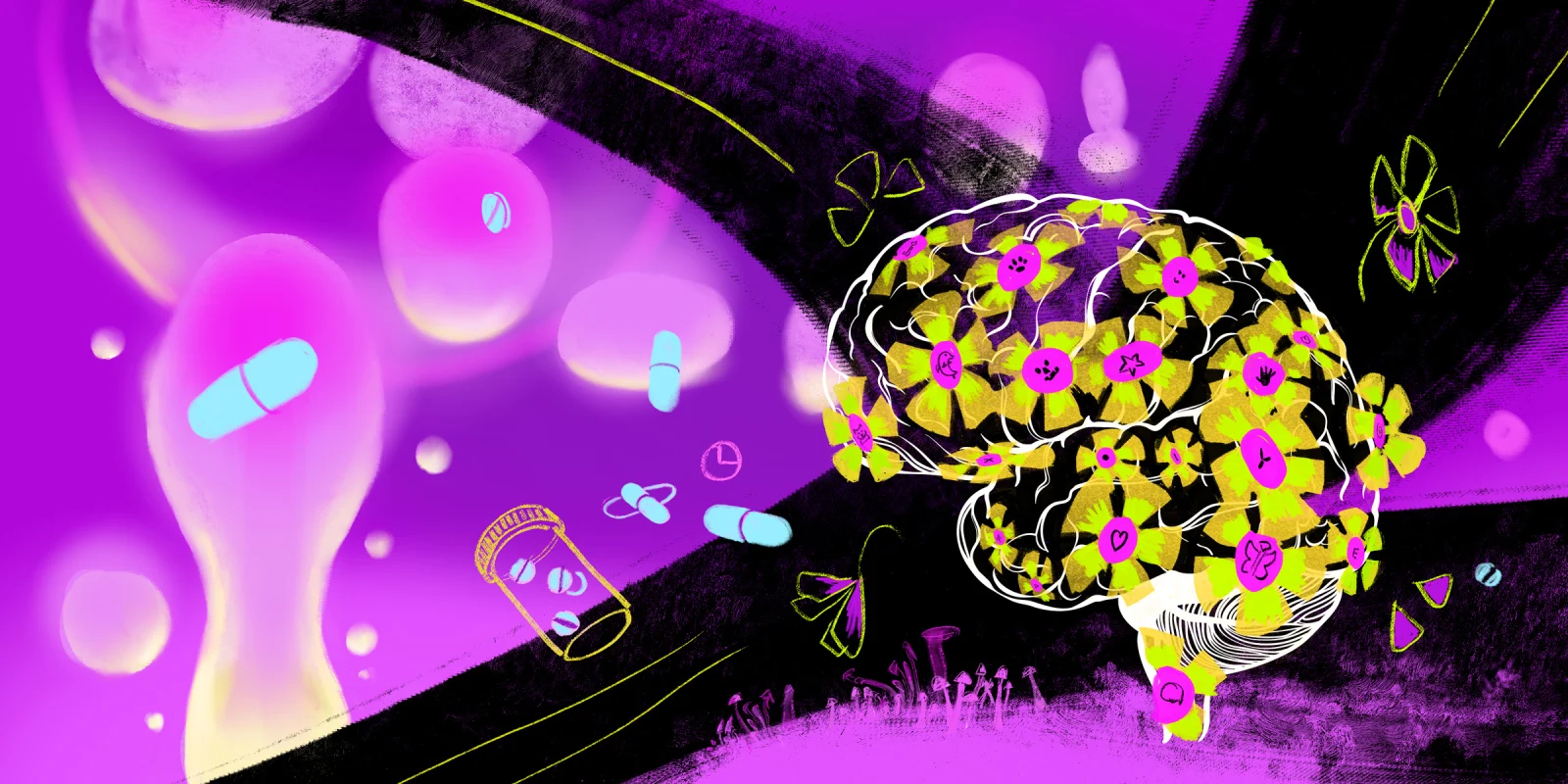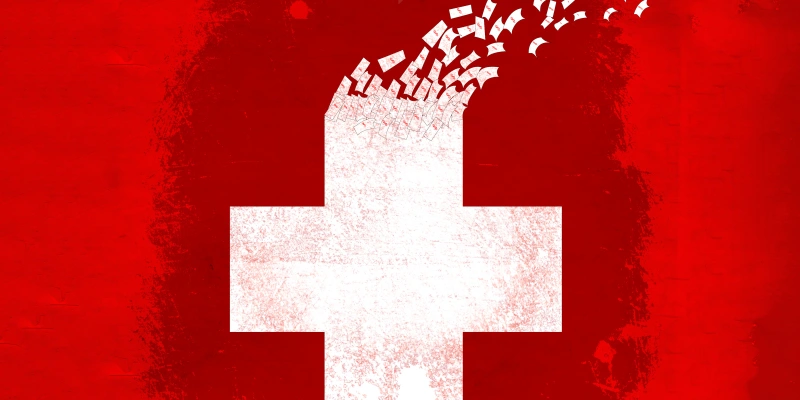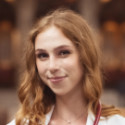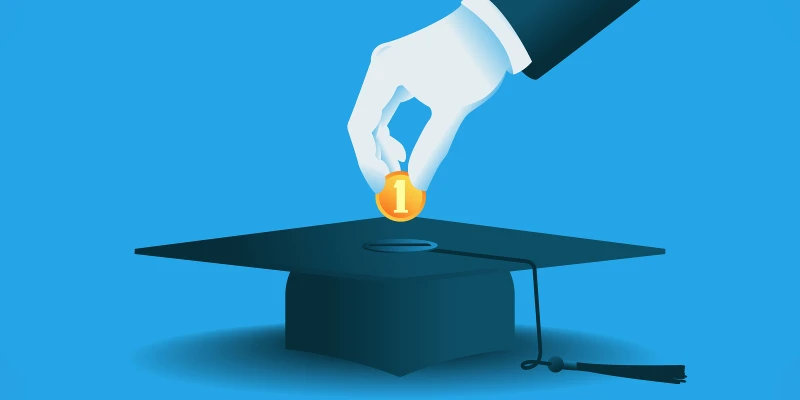I found myself growing more anxious by the second as I processed the patient’s question. Different answers were haphazardly flying around in my mind, but I continued to gaze beyond the patient for what felt like more than a few short moments. I knew I couldn’t pause for too much longer as he patiently waited for an answer regarding his upcoming weekend “trip.” He wasn’t traveling anywhere, but using the term to describe the experience of using psychedelic drugs. I provided a conservative answer, and to this day feel uncomfortable thinking about how I could have better equipped this patient.
Without laboring over the precise classification of psychedelics versus hallucinogens versus entactogens or other categories, I will refer to an umbrella of serotonergic substances that can alter perception and other cognitive processes as psychedelics. Drugs that might come to mind include lysergic acid diethylamide (LSD), mescaline, psilocybin (the primary ingredient in magic mushrooms), N,N-Dimethyltryptamine (DMT), as well as ± 3,4-methylenedioxymethamphetamine (MDMA), colloquially referred to as “molly” or “ecstasy.”
There are others that fall into this broader category of psychedelics, but the main point is that there is a renaissance in medicine involving the promising use of these drugs for a variety of mental health disorders. As the mainstream resurgence of psychedelics continues, I worry that many health care providers, myself included, are not ready and properly equipped to discuss them with patients. This is partially due to the illegality of the substances and hence the lack of recent and robust data, but also due to the persisting skepticism stemming from the war on drugs in the late 60s and 70s.
The use of psychedelics have an ancient origin that predates even written history. Some “… plants and fungi with the power to radically alter consciousness have long and widely been used as told for healing the mind, for facilitating rites of passage, and for serving as a medium for communicating with supernatural realms, or spirit worlds,” writes Michael Pollan in How to Change Your Mind.
Despite the ancient use of mind-altering substances, the psychedelic era didn’t really start in America until after the accidental discovery of LSD in 1943 by Albert Hoffman and the introduction of magic mushrooms in 1957 by way of Life Magazine’s front page publication.
During this fertile period, there was an impressive amount of research done with psychedelics. For example, there were approximately 40,000 patients between the 1950s and 1960s who received LSD-assisted therapy (assisted by trained mental health professionals providing psychotherapy sessions). This research provided promising insight into the potential use of psychedelics for the treatments of various psychiatric conditions, but clinical research wasn’t the only kind of research going on. Societal research among the general population began to unfold as many Americans took recreational “trips” and started the counterculture and anti-war movement. In 1970, President Richard Nixon signed the Controlled Substances Act that made LSD and psilocybin illegal and considered schedule 1 controlled substances, halting most of the government-funded research that was occurring in the space until 2006.
As a clinical pharmacist, I am no stranger to tapping into my pharmacological training to answer a broad range of drug information questions from both health care professionals and patients. However, despite the training, questions about substances that are not yet legal in the U.S. pose unique challenges. A 2021 survey of U.S. psychologists’ attitudes and beliefs around psychedelic drugs reported a generally favorable attitude toward the topic, however, most participants lacked understanding of the full range of effects from the drugs and highlighted the need for more training and education around their use. But despite the resurgence in interest, the more recent “psychedelic renaissance” has produced limited research.
The recent renaissance began in 2006, when Griffiths et al. published “Psilocybin can occasion mystical-type experiences having substantial and sustained personal meaning and spiritual significance.” However, between 2006 and 2020, there were zero NIH grants for the study of classic psychedelic research. This is important as the NIH is considered the world’s largest public funder of biomedical research. But recently, John Hopkins Medicine was awarded a $4 million NIH grant to explore the use of psilocybin use on tobacco addiction.
Currently, the FDA has classified both MDMA-assisted and psilocybin-assisted therapy as breakthrough designations, a process that allows for expediting the FDA review of drugs that show substantial evidence over existing therapies. A phase 3 MDMA-assisted therapy trial recently reported positive data for its use in patients with severe PTSD. Similarly, psilocybin-assisted therapy is showing promising clinical efficacy in major depressive disorder without serious adverse effects. This research comes at a time when the U.S. is confronted by an expanding mental health crisis, resulting in wide-spread societal and public health concerns.
All of this background has set the stage for ripe political movement to decriminalize psychedelic drugs in various states. Oregon passed Measure 109 in 2020 specifically legalizing psilocybin therapy administered by trained facilitators set to begin in 2023. Other cities such as Seattle, Oakland, Santa Cruz, Denver, and Washington have taken similar steps toward decriminalization, with many seeking further legalization. Another groundbreaking piece of legislation from California, Senate Bill 519, is in legislative progress and set to legalize the personal possession and social sharing of a handful of psychedelics.
Let’s go back to the story of the patient who was asking his pharmacist for some guidance around his upcoming psychedelic trip. These patients are asking for a reason and are likely to experiment regardless of their clinician’s opinion. Whether for legal, employer-related or personal reasons, it is easier (and perhaps safer) for clinicians to turn the other cheek and take the conservative approach: advise against its use, document it, and move on. But is this the best approach?
It is our duty as health care providers to provide comprehensive, digestible, and objective information to our patients to guide them in making informed decisions. Providing objective information is different from an endorsement or medical recommendation. You can still advise against its use, but not providing any information is irresponsible.
The onus to find information and educate ourselves is on us, and we must make this commitment for our patients. Here are some ways I am striving to stay up to date on this evolving space:
- Creating PubMed alerts around various keyword searches, such as “psychedelics” and “hallucinogens.” More specific search terms can also be utilized such as “psychedelic-assisted psychotherapy.”
- Tapping into the efforts of various universities (John Hopkins, Stanford, Yale, and UC Berkeley) around the country that have formed psychedelic education groups or departments
- Staying up to date with some advocacy groups that are also taking steps to train clinicians and provide education
- Tuning into the NIH as they publish information online, such as their recent “NIH Workshop on Psychedelics as Therapeutics”
- Staying current with clinical trials by searching for keywords, such as “hallucinogens” in the Other Terms box on the ClinicalTrials.gov website
- Educating myself on available peer education and harm reduction organizations, such the Fireside Project or Dance Safe
- Learning about Psychedelic Harm Reduction and Integration (PHRI) and other non-ordinary States of Consciousness (NOSCs)
- Reviewing additional resources curated and shared by New York Times bestseller Michael Pollan
As clinicians, it is understandable to be cautious in these discussions. However, regardless of whether we come to the table in opposition or support, it is best to be prepared and at the very least open, curious, and willing to create a non-judgmental space for patients. I wish I would have been more prepared and knowledgeable about the topic, but even if I had just been more open to listening, I would have been more helpful. With the growing popularity of psychedelics in society and medicine, I know that I’ll be prepared for my next patient encounter.
What do you know about psychedelics? Share your knowledge in the comments to continue the education of your peers.
Dalga Surofchy, PharmD, APh, is an Advanced Practicing Pharmacist currently working as a Clinical Manager of Medical Affairs at a boutique pharmaceutical consulting group. He also teaches as an adjunct faculty at UC San Diego. He holds a Bachelor’s degree in Biology from UC Berkeley and a Doctor of Pharmacy degree from UC San Francisco. His interests are in precision/personalized medicine, preventative medicine, health equity, education, and market/patient access. His previous roles include a mix of outpatient and clinical pharmacy. Outside of work, he enjoys playing basketball, surfing, rock-climbing, skiing, and spending outdoor time with his family. Dalga is a 2021–2022 Doximity Op-Med Fellow.
Illustration by Jennifer Bogartz







